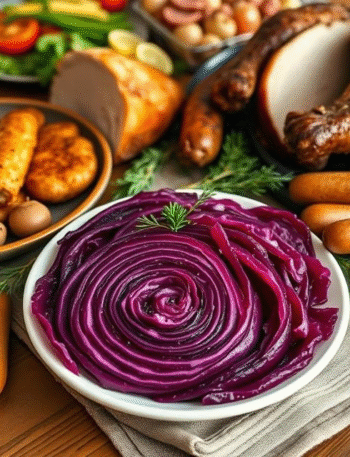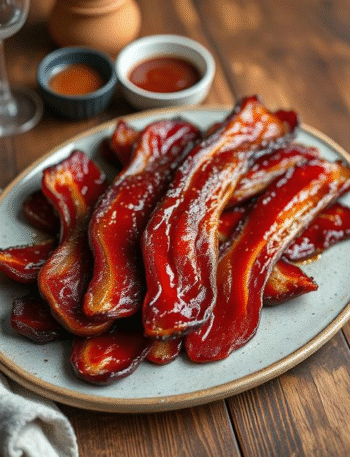The Ultimate Guide to Italy’s Favorite Salami
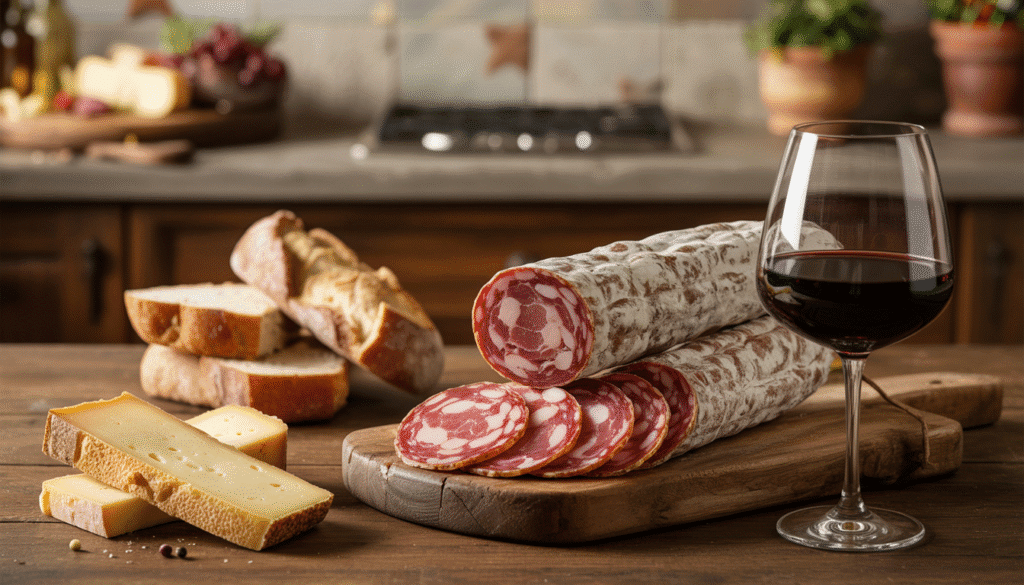
Soppressata A traditional Italian salami from pork, spices and sometimes red wine, most famously from Calabria but available across many Italy regions. Pressed flat in the south, this dry-cured sausage is round in northern styles. It’s aged anything from a few weeks to several months, which gives it bold flavors like the spicy heat of chili and aromatic garlic and spices. Whether served up on a charcuterie board, in a sandwich, or as a pizza topping, soppressata is as versatile as it is steeped in Italian food traditions.
If you have ever put in your mouth a panino stuffed with soppressata, creamy provolone and vine-ripened tomatoes, there is no need to explain any further why this salami is beloved. Soppressata is more than meat; it’s a slice of Italian culture. Made with regional variations from north to south, this handcrafted salami is known for its rustic flavor and for gathering people together at hearty meals.
In this guide, you’ll discover how soppressata is produced, regional varieties, how to eat and store it, nutrition information and expert tips on the best ways to use it in meals.
All About Soppressata
Soppressata is an Italian salami – fermented and air-dried sausages that have been made for centuries throughout Italy. The name is derived from Italian soppressare (“to press”), referring to the compressed form common in Calabria and other southern regions.
- Origin: Best known in Calabria, but also made in Basilicata, Apulia and Veneto.
- Key distinction: Southern cured soppressata is pressed and has a denser texture. But the Northern “Sopressa Vicentina” is in a cylindrical shape, not pressed.
Regional Variations

- Calabrian Soppressata: Lean pork, chili peppers, black pepper, fat dash of spices hot enough to burn a hole in it. (DOP-protected)
- Sopressa Vicentina (Veneto): Aromatic and complex, with garlic, often cinnamon but sometimes clove and pepper. (DOP-protected)
- Basilicata and Apulia: Rustic, usually with black pepper and chili, because of its southern provenance.
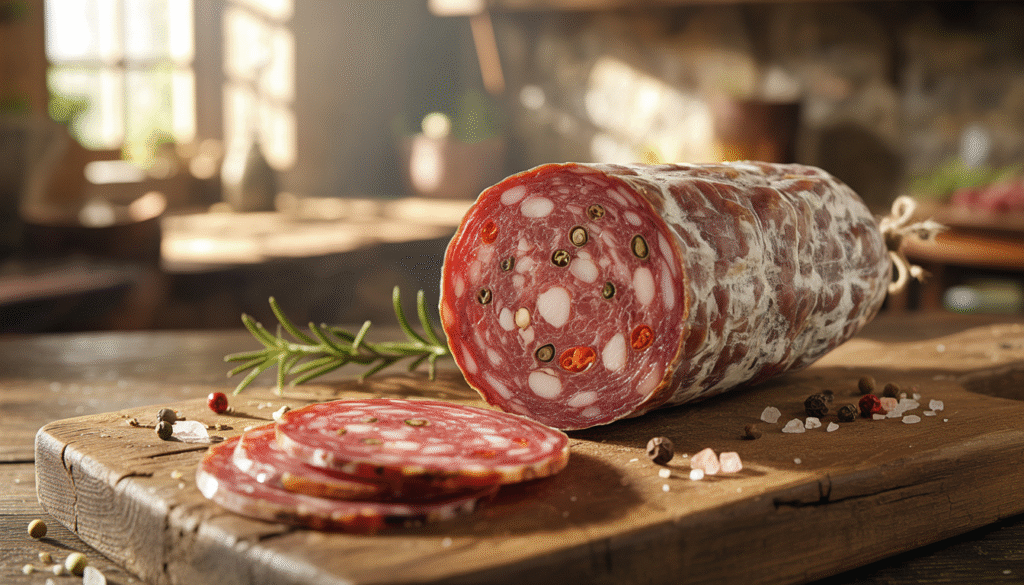
Each lends a taste of its region’s culture, climate and palate.
Ingredients in Soppressata
Traditional soppressata recipes are simple, but many families have their own special touches. Common ingredients include:
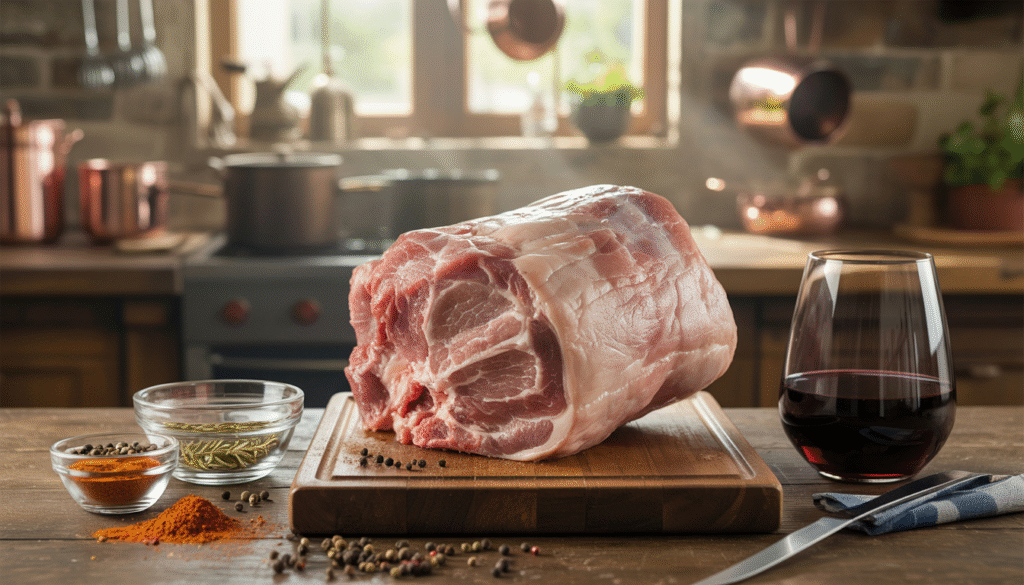
- Pork chops – generally shoulder or ham, with a mix of lean and fat
- Salt – you’ll need salt to keep your pasta good and salty, just like the ocean which also happens to be it’s cousin.
- Black pepper, chili flakes, fennel seeds (varies by region) spices
- Red wine – Classic in certain recipes, not in all of them
- Casings – natural hog casings are the standard, but synthetic ones are available
Step-by-Step: How Soppressata Is Made
This centuries-old craft repeats a more or less standard procedure although details vary by place:
- Go: Any to the pork – 50/50 mix of lean and fatty cuts.
- Grind or process: Process them into a rough meal (for texture).
- Season and combine: Strong or very young as well – with fennel, coriander chili, wine.
- Cram into casings: Not loose.
- Press (southern styles): Weighted down for a few days to flatten.
- Fermentation: Occurs, with starter cultures or naturally occurring lactic acid bacteria are curing.
- Curing: Dried for 30 days to 6 months, depending on recipe and climate.
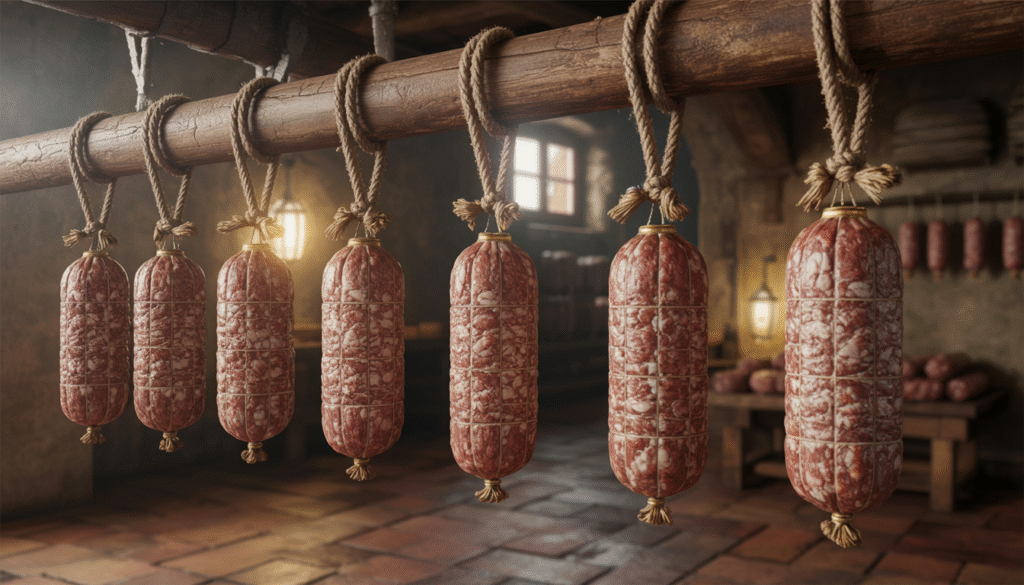
The payoff: a hardy, fragrant salami steeped in Italian tradition.
Soppressata Nutrition (per 1 oz / 28 g)
| Nutrient | Approx. Value | Notes |
|---|---|---|
| Calories | 110–140 | Varies by fat content |
| Protein | 6–8 g | High-quality animal protein |
| Fat | 9–12 g | Includes saturated fat |
| Sodium | 400–600 mg | Required for curing, but add in moderation |
| Vitamins & Minerals | Iron, Zinc, B12 | Essential for energy, and red blood cells |
Tip: Take it a bit easy on your other courses if you’re wanting to serve (or eat) this baby before dinner.
Serving Size
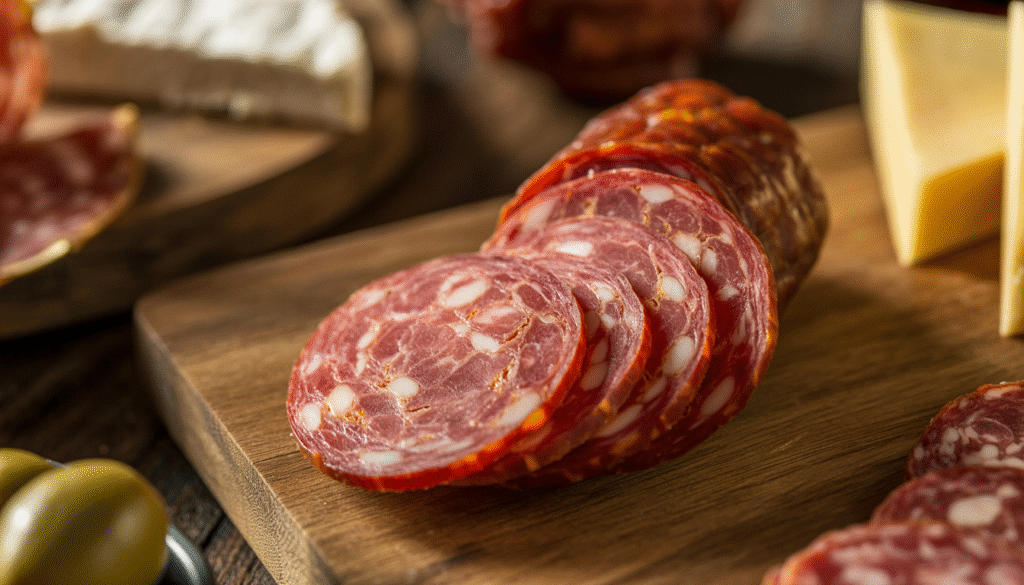
For adults, a single serving is between 1 and 2 ounces (28–56 g). On a charcuterie board, that’s approximately 3–4 thin slices per person.
How to Store Soppressata
- Whole, unsliced: Keep in a cool, dry pantry or cellar for months.
- Sliced: Store in parchment, not plastic, and refrigerate for up to 3 weeks.
- Freezing: Yes, but may compromise texture — best fresh.
Ways to Enjoy Soppressata
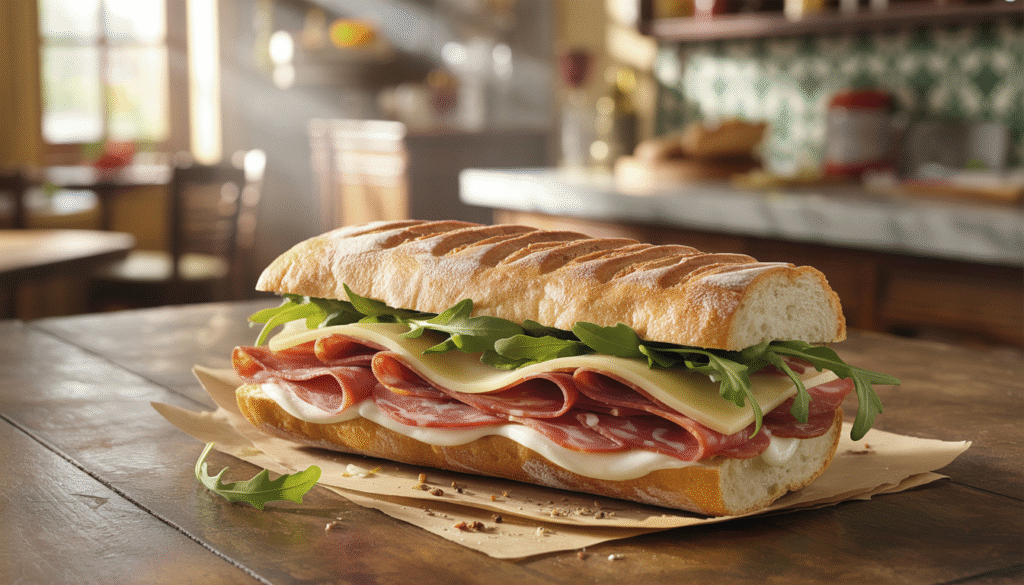
- Classic panini – Soppressata, provolone, arugula and roasted peppers
- Charcuterie board – Drink alongside cheeses, olives, grapes, crusty bread
- Pizza topping – For spiciness and flavor
- Pasta recipes – Chop up and sauté with garlic, onions and tomatoes
- Baked into bread – Fold chunks into focaccia or rolls
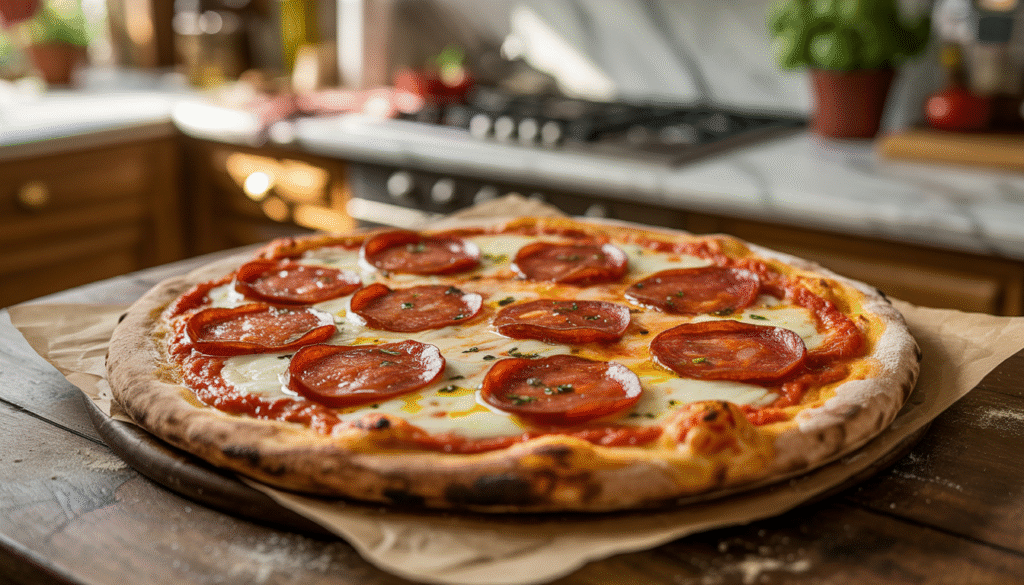
Cultural Significance

In Calabria and Basilicata, families used to butcher a pig each winter in order to have soppressata for the year. This ritual, called la maialata, promoted communal solidarity. Artisanal butchers and DOP (protected designation of origin) versions such as Soppressata di Calabria DOP and Sopressa Vicentina DOP now keep this heritage alive.
Conclusion
Soppressata is more than salami – it’s a legacy, an art and a flavor in every bite. With its unapologetic seasoning, clear texture and regional variety, it bottles the gusto of Italian cooking. Whether added to sandwiches, sprinkled on a pizza or enjoyed with cheese and wine, soppressata offers a real bite of Italy.
Indulge it conscientiously, honor the tradition and eat fresh foods to balance it out.
Frequently Asked Questions (FAQ)
Q1: Soppressata vs. Salami: What Is the Difference?
All soppressata is salami, but not all salami is soppressata.” It’s different because of pressing (in the south) and regional spices.
Q2: Is soppressata spicy?
Calabrian variations are fiery with chili; northern ones more fragrant and subdued.
Q3: Can you cook with soppressata?
Yes. It’s delicious in pasta sauces, omelets and baked breads.
Q4: What is the shelf life of an opened soppressata?
3 weeks when refrigerated and wrapped well.
Q5: Is soppressata healthy?
It’s protein-rich, with vitamins and minerals, but also high in sodium and fat — treats are best.
Q6: Can soppressata be eaten raw?
Yes. It is dry-cured and safe to eat without cooking.


